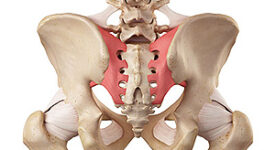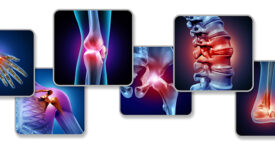Millions of individuals worldwide suffer from back discomfort, making daily activities more difficult and lowering their quality of life. Don’t worry, though; in this article, we’ll look at the causes and symptoms of back pain as well as effective treatment choices that can provide you with much relief from numerous things, from poor posture and strained muscles to more serious underlying disorders like ruptured discs or spinal stenosis, can lead to back discomfort. Finding the most effective treatment strategy requires understanding the underlying reasons for your back pain.
Back discomfort can affect everyone, regardless of age or background. It may be a crippling condition that affects daily living and quality of life. This essay aims to provide readers with a comprehensive understanding of this widespread issue by examining the causes, symptoms, and workable management strategies for back pain.
Understanding Back Pain
Back pain can originate from various structures in the spine, including bones, muscles, nerves, and discs. .Two general categories can be made for it:
Acute Back Pain: Acute Back pain is sudden and frequently brought on by trauma or injury.
- Accidents, accidents, or muscle strains are some common causes. With the right care and rest, symptoms normally disappear within a few days to weeks.
- Chronic back pain: More than three months pass before back pain becomes chronic. Herniated discs, arthritis, or spinal stenosis are a few examples of underlying medical issues that may be to blame.
- Long-term management of chronic back pain is necessary and frequently calls for lifestyle changes.
Common Causes of Back Pain
Muscle and Ligament Strains: Overexertion, lifting heavy objects, or sudden movements can lead to strains. Poor posture and weak core muscles increase the risk of strain.
- Herniated Discs: When the cushion-like discs between the vertebrae rupture or bulge, they can compress nerves, causing pain.
- Herniated discs often result from age-related degeneration or injury.
- Arthritis:
- .Osteoarthritis and rheumatoid joint inflammation can influence the spine’s joints, prompting torment, solidness, and decreased portability.
- Spinal Stenosis: This condition includes restricting the spinal channel coming down on the spinal string and nerves.
- It frequently occurs with age and can cause persistent back and leg torment.
- Sciatica: Sciatic nerve compression can cause shooting pain that radiates from the lower back down one leg.

Symptoms of Back Pain
Back pain can appear in different ways, contingent upon the basic reason. Normal side effects include:
- Dull, excruciating lower back pain.
- Sharpness or shooting torment that transmits to the rump and legs
- Stiffness and reduced range of motion.
- Muscle spasms.
- Legs that are dead or trembling.
- Shortcoming in the legs.
- Torment that deteriorates with development or certain positions
Effective Management Strategies
Managing back pain requires a multifaceted approach tailored to the individual’s condition and needs. Here are some effective strategies:
- Rest and Activity Modification: Short-term rest may be beneficial for acute back pain. Gradual return to normal activities and movements is crucial. Avoid prolonged sitting or standing and incorporate regular breaks.
- Physical Therapy: Physical therapists can design exercises and stretches to strengthen core muscles and improve posture. Manual therapy may also alleviate pain and improve mobility.
- Medication: Painkillers available over the counter, such as acetaminophen or ibuprofen, can help control mild to severe pain.
- Injections: Epidural steroid injections can relieve nerve-related back pain. Facet joint injections or nerve blocks may target specific sources of pain.
- Lifestyle Modifications: Maintain a healthy weight to lessen the strain on your spine by making lifestyle changes. Postural improvements can be made by ergonomic changes at work and at home. Regular exercise, including low-impact swimming or walking, can strengthen the back.
- Surgical Intervention: Surgery is considered when conservative treatments fail to provide relief. You might be advised to undergo procedures like discectomy, laminectomy, or spinal fusion.

Tips for Maintaining a Healthy Spine and Preventing Future Episodes of Back Pain
It’s critical to keep your spine in good shape to be healthy and avoid back pain again. Here are some tips for you.
Practice good posture: Pay attention to your posture at all times of the day, whether you’re standing, sitting, or moving around. Relaxed, and feet flat on the floor. Avoid slouching or hunching forward
- Exercise regularly: Regular physical activity can strengthen the muscles supporting your spine. Focus on exercises that improve flexibility, such as yoga or Pilates, and activities that promote core strength, like swimming or weightlifting.
- Lift properly: When lifting heavy objects, bend your knees and use your leg muscles to lift rather than straining your back.
- Maintaining a healthy weight: Excess weight strains your spine unnecessarily. Maintaining a healthy weight through a balanced diet and regular exercise can reduce the risk of developing back pain
- Take breaks from sitting: Prolonged sitting can cause postural strain and contribute to back pain. Take regular breaks to stand up and stretch throughout the day, especially if you have a desk job.
- Sleep on a supportive mattress: Invest in a mattress that offers enough back support. Although a medium-firm mattress is generally advised, individual preferences may differ.
- Avoid excessive high heels: High heels can alter your posture and increase strain on your feet, ankles, and lower back. While they may be fashionable, it’s important to consider the long-term effects on your health. Opt for shoes with lower heels or choose flats that provide your lower back.
- Practice stress management techniques: Stress can contribute to muscle tension and exacerbate back pain. Find healthy ways to manage stress, such as meditation, deep breathing exercises, or engaging in hobbies that bring you joy.
- Quit smoking: Smoking decreases blood flow to your spine’s discs, causing them to be more susceptible to degeneration and raising your risk of back discomfort. Quitting smoking can improve your overall spinal health
- Take notice of your body: Pay attention to your back if you notice any pain or discomfort. Rest when needed, apply heat or ice as appropriate and don’t hesitate to seek professional medical advice if the pain persists or worsens. Remember, maintaining a healthy spine requires consistent effort and self-care. By implementing these lifestyle suggestions, you can lower your likelihood of experiencing back pain episodes in the future and live a healthy, pain-free life.

Conclusion:
Back Pain is a typical sickness that can fundamentally affect your routine. By figuring out the causes, perceiving the side effects, and carrying out successful administration systems, you can recover command over your back well-being and partake in a free presence by and by. Try not to allow back agony to direct your life – assume responsibility today and begin your excursion towards a better, more joyful back.
Back torment is a pervasive condition that fundamentally influences a singular’s prosperity. Figuring out the causes, perceiving side effects, and embracing powerful administrative procedures are urgent moves toward mitigating torment and forestalling its recurrence. By integrating a solid way of life propensities like normal activity to keep your central areas of strength for muscles keeping a sound load to decrease extra weight on your spine – you’ll be making proactive strides towards forestalling future episodes of inconvenience.









